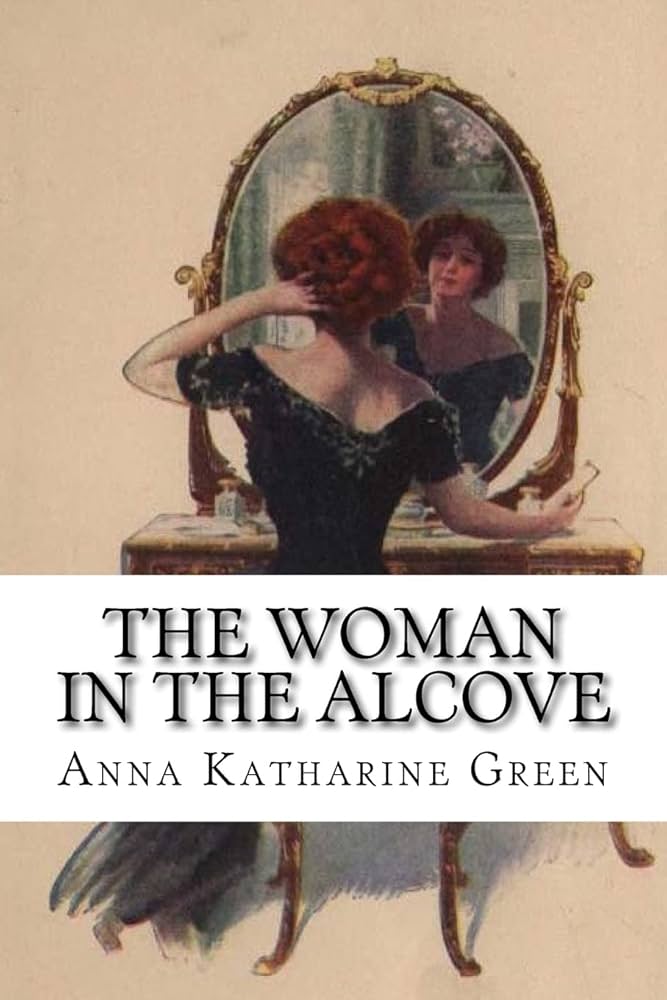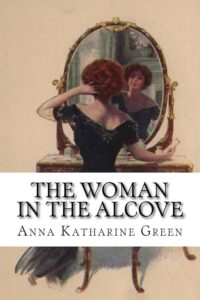Chapter II — The woman in the Alcove
byChapter II – The woman in the Alcove opens with a cascade of tension and emotion as the narrator slowly regains her senses in a room charged with distress. Her awareness sharpens just enough to see Mr. Durand, her fiancé, watching over her with a solemn expression that hints at something darker beneath the surface. It soon becomes evident that a crime has shattered the elegance of the evening: a woman has been murdered in the secluded alcove of the venue. The narrator, though visibly shaken and still recovering, instinctively clings to Durand’s presence, sensing both his inner turmoil and the shifting attitude of those around them. Suspicion quickly spreads as whispers circulate, drawing a direct line between Durand and the slain woman. His recent private conversation with the victim becomes a focal point for scrutiny, adding a heavy air of dread that no one dares to voice openly.
Despite the commotion and her own fragile condition, the narrator chooses to remain beside Durand. Her search for her uncle amidst the swirling confusion reveals a deeper anxiety—a need not just for family support, but also for clarity in a moment that feels increasingly unreal. Upon finding her uncle, she is confronted with a revelation that adds weight to the growing suspicions: Durand is one of the last people known to have interacted with the victim. The implication is devastating, yet her resolve does not waver. In a moment that might seem irrational to others, she solidifies her bond with Durand, announcing their engagement even as the shadow of suspicion darkens around him. This declaration, made during a time of social panic and rising tension, is less a romantic gesture and more an act of defiance and loyalty.
As the investigation begins, Inspector Dalzell takes charge with a methodical demeanor that contrasts the emotional disarray of the guests. His questions are measured but piercing, especially when he turns his attention to the narrator. He subtly suggests that Durand may have passed something to her—an object, perhaps—that could be tied to the crime. This insinuation casts a fresh layer of complexity over her position, implying that she could unknowingly be in possession of a crucial clue. The tone of the interrogation is polite, but beneath it lies a clear warning: involvement, even indirect, could bring consequences. The narrator, sensing this shift, remains calm but inwardly alarmed by the growing weight of implication hanging over them both.
Throughout the chapter, a delicate dance unfolds between affection and suspicion. The narrator’s internal conflict becomes more pronounced as the warmth of her trust in Durand clashes with the chill of public opinion and official inquiry. Still, her loyalty holds firm; she does not flinch under the inspector’s gaze nor does she entertain doubt in Durand’s character. Instead, she pushes back, not with anger but with a firm insistence on his innocence. This unwavering stance highlights her emotional resilience and sharpens the contrast between the chaos around her and the clarity she feels within. The quiet strength she displays becomes one of the most compelling aspects of the narrative as the story begins to pivot from romance toward mystery and potential betrayal.
This chapter enriches the psychological and emotional depth of the story, painting its characters in subtler shades. The social setting, once full of grace and glamour, now feels like a gilded cage where secrets and suspicions whisper through every corridor. The narrator, initially just a passive observer, begins to emerge as a more active force, her perception sharpening in response to the gravity of the events unfolding. Her instincts, driven by a mix of emotion and logic, lead her to conclusions that resist the obvious. Readers are drawn into her internal struggle, questioning alongside her whether love can truly blind one to danger—or if it might offer a unique insight that others lack. This deepens engagement with the narrative and builds anticipation for what truths may soon surface from the shadows.
Though the murder investigation takes center stage, the emotional stakes remain tethered to the personal choices of the narrator. Her decision to publicly commit to Durand serves as both a romantic declaration and a strategic stance against the court of public opinion forming around them. It’s a gesture that defies the expectations of those who might view her as naïve or impulsive, positioning her instead as someone willing to risk reputation for truth. This act complicates her role in the investigation; she is no longer just a witness but a figure whose allegiance shapes perception and outcome. As the reader, one is left to wonder: is this strength or stubbornness? Love or denial? The answers lie just beyond the alcove’s shadowed edge.


